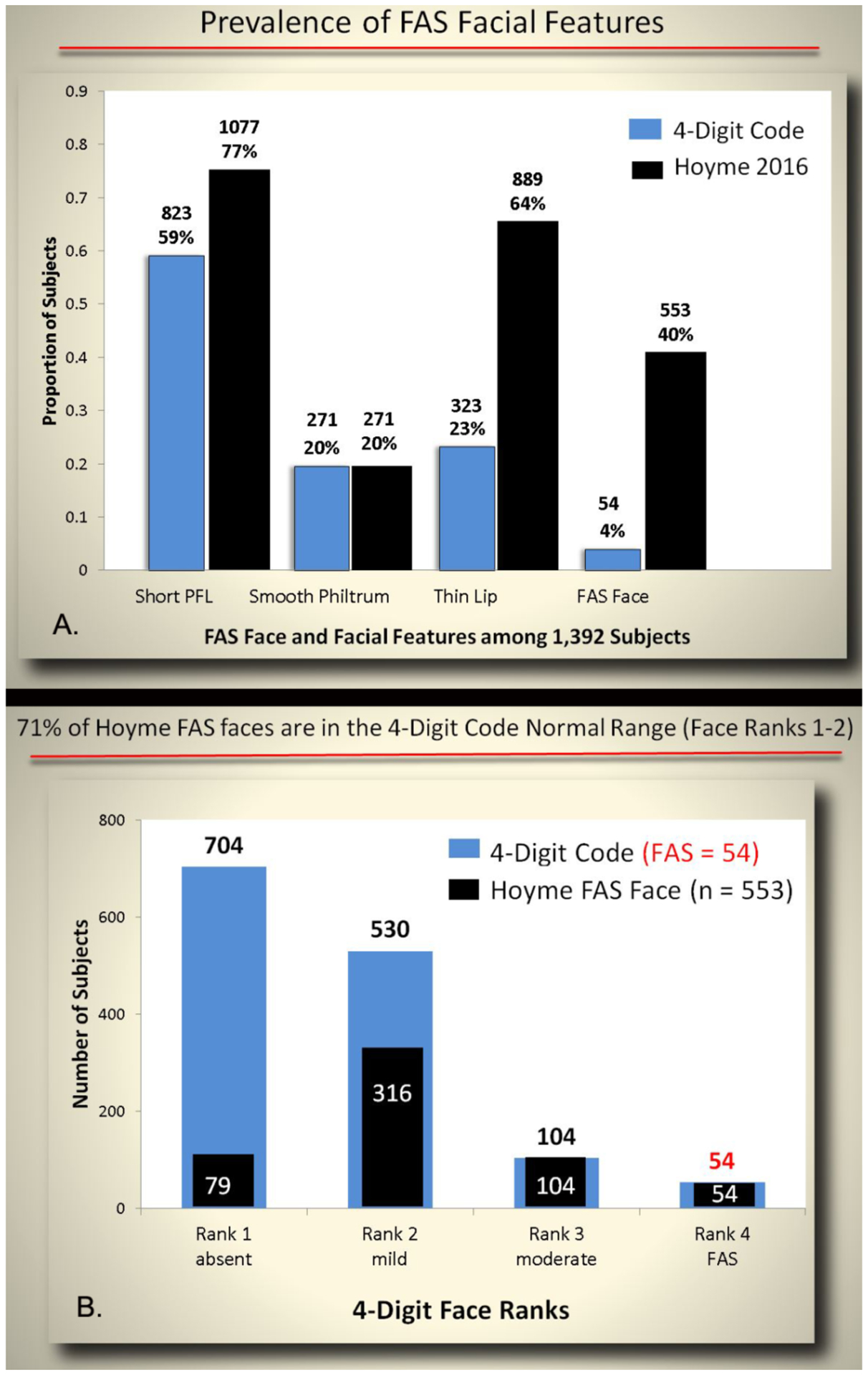Figure 12.

The prevalence of FAS facial features differed between the 4-Digit Code and Hoyme diagnostic systems.
A) When the facial criteria from each diagnostic system were applied to the 1,392 patients, the most striking contrast was the prevalence of the thin upper lip. Use of the Hoyme et al. North American Lip/Philtrum Guide resulted in 3 times more patients being classified as having a thin upper lip. The criteria used to define each bar: Short PFL (4-Digit Code ≤3rd percentile; ≤10th percentile Hoyme et al.); Smooth Philtrum and thin upper lip (Rank 4 or 5 on the 4-Digit Code or Hoyme et al. [3] lip philtrum guides); FAS Face (4-Digit Code Face Rank 4; Hoyme al. FAS/PFAS face). B) 71% of the Hoyme et al. FAS facial phenotypes fell in the 4-Digit Code normal range (Face Ranks 1 and 2).
